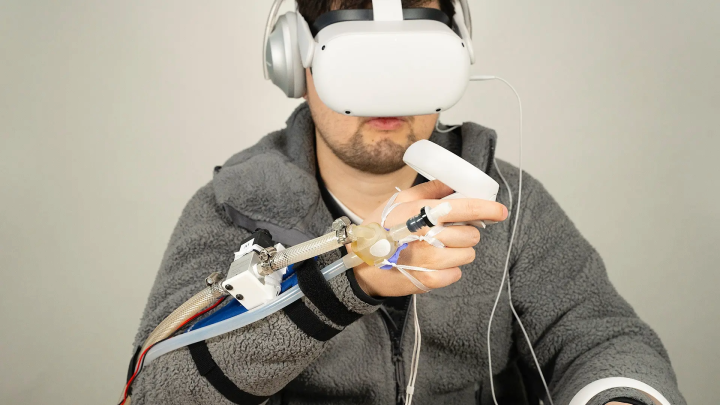Haptic Hardware Offers Waterfall of Immersive Experience
Increasingly sophisticated computer graphics and spatial 3D sound are combining to make the virtual world of games bigger, badder and more beautiful than ever. And beyond sight and sound, haptic technology can create a sense of touch—including vibrations in your gaming chair from an explosion, or difficulty turning the wheel as you steer your F1 racecar through a turn because of g-forces.
While all this typically relies on force feedback using mechanical devices, University of Maryland researchers are now offering a new take that delivers lifelike haptic experiences with controlled water jets. But don’t worry—you and your surroundings will stay dry.
The team presented a paper and demoed its new waterjet-based technology known as JetUnit at the ACM Symposium on User Interface Software and Technology last month in Pittsburgh.
In addition to its use in gaming, the system might one day aid blind users by providing force feedback cues for spatial navigation and other interactions, thus enhancing accessibility, said project leader Zining Zhang, a computer science doctoral student in the Small Artifacts (SMART) Lab.
The UMD device offers a wide range of haptic experiences, from subtle sensations that mimic a gentle touch to sharp pokes that feel like a needle injection.
User testing has demonstrated that JetUnit is successful at creating diverse haptic experiences within a virtual reality setting, with participants reporting a heightened sense of realism and engagement. Compared to other available haptic technologies, the system can create an unusually broad range of forces based on changes in water pressure.
Click HERE to read the full article
The Department welcomes comments, suggestions and corrections. Send email to editor [-at-] cs [dot] umd [dot] edu.
